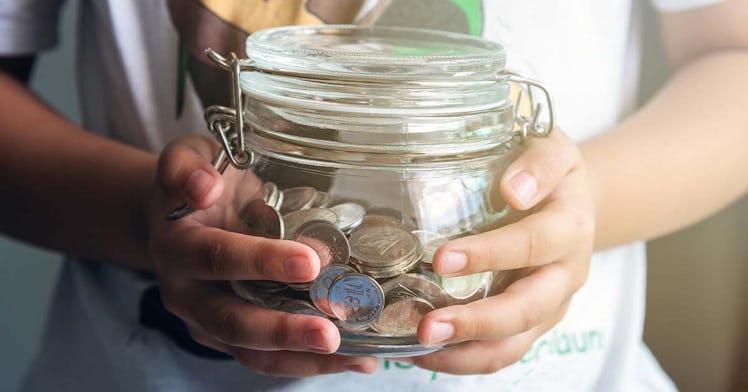Parents To Receive Monthly Payments from COVID Bill Long After Stimulus Checks Go Out
Here's what you need to know about the bigger, better child tax credit, and how much you'll get as a result.

The House will vote today on the version of the COVID-19 relief bill that the Senate passed, and Joe Biden will sign it, likely before the end of the week. Then, the IRS will start sending out direct deposits and churning out a third round of stimulus checks, sending money to people who’ve made it through over a year of the pandemic.
But while less immediately impactful than the economic impact payments, the expanded and improved child tax credit is going to give parents a lot more money over time and will drastically cut child poverty by giving parents thousands of dollars per kid on a monthly basis, rather than a one-time tax refund given out at the end of the year to a smaller pool of people. Yes — the program, basically a child allowance for the next year, will help parents to the tune of hundreds of dollars a month in straight up cash. It’s the first plan of its kind in the United States and is revolutionary.
Here’s what you need to know about whether you’ll eligible for the expanded child tax credit and how much you can expect to receive.
What is the old, and new, Child Tax Credit?
The CTC was established in 1997. Currently, it’s worth up to $2,000 per child under the age of 17, though it decreases by five percent of the adjusted gross income of $200,000 for single parents and $400,000 per couple, which means it zeroes out at $240,000 and $440,000, respectively.
Since 2018, there has also been an additional $500 credit for dependents 17-18, those who are 19-24 and enroll full-time in school for at least five months of the year, and older dependents.
The extremely poor—those with less than $2,500 in income—don’t receive the CTC, a punishment doled out to the most vulnerable adults and their kids. But the poor who do make $2,500 or more often don’t receive the entire credit because, while it’s often a substantial percentage of their meager incomes, the dollar amount they pay in federal income tax is low.
If the amount of the CTC exceeds the taxes owed, those parents can receive up to $1,400 as a refund, not the full $2,000 they’d get if they paid $2,000 in taxes. The bottom line is that at the bottom end of the economic spectrum, those who make more money also get more money.
How much will I get from the child tax credit, and who qualifies?
The maximum amounts of the new CTC will be $3,600 a year per kid up to five years old and $3,000 a year per kid between six and 17 in monthly cash intallments. So, if a family has one kid who was 4 and another who was 7, they will get $6,600 per year. Families with three kids between six and 17 should expect to see $9,000 per year. You get the math. There’s no word as to whether the plan phases out for big families — a rarity in public policy.
The credit will start to phase out at $75,000 a year for individual filers and $150,000 a year for joint filers, decreasing by $50 for every $1,000 above those thresholds, until zeroing out at $95,000 and $170,000, respectively. Filers making up to the old thresholds of $200,000 and $400,000 would still be eligible to claim the old $2,000 credit.
The new CTC is also fully refundable. That means that those poor filers who could only receive $1,400 of the old $2,000 credit because they didn’t pay a high dollar amount in taxes can receive the entire $3,000 or $3,600 per dependent no matter how much they pay in taxes. And there’s also no income minimum, so even families with no income who don’t pay any taxes are eligible to receive the full credit.
When will the new Child Tax Credit be disbursed?
Rather than having to wait until tax time to receive the entire benefit, families will be able to opt to receive half of the credit in the form of monthly payments. It’s up to the Treasury Department to decide on a workable timeline if and when the bill passes, but if payments start in July they’d be worth $300 for those with younger kids and $250 for those with older kids. If the payments were to run monthly for an entire year, they would be half of those amounts, with parents able to access the second half of the credit at tax-filing time.
What’s the catch?
The only catch is that Democrats passed the program as a one-year experiment, not a permanent augmentation of the social safety net. The hope is that they’ll be able to extend it later in this Congress, which remains to be seen as a reality but could actually work.
The bet the Democrats are making is that the new program will be very popular—part of the reason payments will go out monthly is that they don’t want parents to have to wait until next April to benefit from the new credit—and that voting against it will be something Republicans are reticent to do (much like health care.)
Poor and middle-class parents around the country, now tantalizingly close to a game-changing new benefit, hope they’re right.